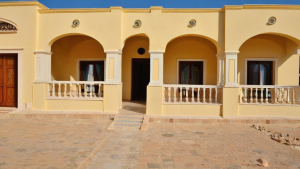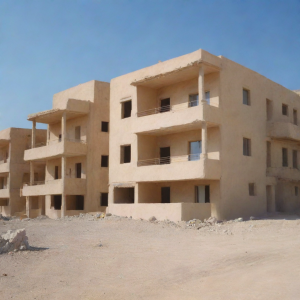Summary about owning and buying property in Hurghada, Egypt.
- Investing in rental properties can be a lucrative way to build long-term wealth, but the key to success lies in choosing properties that generate strong rental yield.
- Rental yield is the annual return a property offers based on the rental income it produces relative to its purchase price.
- One of the most reliable indicators of strong rental yield is a location experiencing steady or increasing rental demand.
- When a property’s purchase price is reasonable in relation to its expected rental income, your rental yield percentage will naturally be stronger.
- A property located in an area with consistently low vacancy rates indicates strong tenant demand and a competitive rental market.
5 signs a property will offer strong rental yield
Investing in rental properties can be a lucrative way to build long-term wealth, but the key to success lies in choosing properties that generate strong rental yield. Rental yield is the annual return a property offers based on the rental income it produces relative to its purchase price. Identifying the right property before buying can save you from poor returns and costly mistakes.
Location with high rental demand
One of the most reliable indicators of strong rental yield is a location experiencing steady or increasing rental demand. Properties near universities, business districts, hospitals, or major transit hubs typically attract a larger pool of tenants. This demand not only helps keep vacancy rates low but often allows landlords to charge higher rents. When evaluating a property’s potential, it’s important to research local rental vacancy rates, population growth trends, and upcoming infrastructure projects. Areas with improving amenities and transport links usually show rising rental values and therefore offer stronger rental yields.
Property type suited to target tenants
Understanding who your target renters are can make a significant difference in rental yield. For example, units like studios or one-bedroom apartments near universities attract students, while larger family homes in suburban neighborhoods appeal to tenants looking for long-term leases. Properties that meet the specific needs of the tenant group tend to stay occupied longer and can command competitive rents. Additionally, newer developments or recently renovated properties often justify higher rental prices thanks to modern fittings and lower maintenance costs, boosting overall yield.
Favorable purchase price relative to market rents
Strong rental yield frequently comes from buying properties at a price below or aligned with the current market values, especially compared to achievable rents. Conducting a thorough rental appraisal before purchase helps you estimate potential income and compare it with the cost of acquisition. When a property’s purchase price is reasonable in relation to its expected rental income, your rental yield percentage will naturally be stronger. Watch out for properties that are overpriced, as high capital costs will reduce rental return and pinch your cash flow.
Stable or growing local economy
Properties in areas with a stable or expanding economy tend to provide more reliable rental income streams. Jobs growth, business stability, and investment in local infrastructure attract and retain tenants, reducing the risk of vacancies. Economic health impacts renters’ ability to pay and demand for housing, directly influencing rental yields. Keep an eye on economic indicators like employment rates, new business openings, and government investment in the region. When these factors are positive, rental yields are more likely to be strong and sustainable over time.
Low vacancy rates and competitive rental market
Vacancy rates are a good barometer of rental property performance. A property located in an area with consistently low vacancy rates indicates strong tenant demand and a competitive rental market. This environment drives rents upward and ensures your property remains occupied, maximizing your yield. Before buying, check local vacancy statistics and talk to property managers or real estate agents familiar with the region. Properties in neighborhoods with historically high vacancy rates should be approached cautiously, as extended vacancies create gaps in rental income, reducing overall yield.
By focusing your property search on these five signs, you’ll be well-equipped to identify real estate investments that offer strong rental yields. Remember, rental yield isn’t just about current income,it’s about sustainable returns that stand the test of time. Carefully analyzing the location, property type, purchase price, economic stability, and vacancy statistics will help you maximize your investment returns while minimizing risk.
How to maximize your rental income through smart property investments
Identifying high rental yield properties
Maximizing your rental income starts with choosing the right property investment. Not all properties generate the same rental return, so understanding key indicators of high rental yield can make a significant difference. Rental yield is the annual rental income as a percentage of the property’s value. A strong rental yield means your investment is working harder to generate income, which is essential for long-term profits.
Look for properties in areas with growing rental demand and limited supply. This typically leads to higher rents and better occupancy rates. Locations near universities, business districts, or popular transport hubs are often excellent choices as tenants prioritize convenience. Also, consider the property type,apartments and multi-family homes in growth markets can outperform single-family homes in more stable markets.
5 signs a property will offer strong rental yield
1. low property price compared to average rent
A property priced below the area’s average but commanding a rent near or above market rates is a strong candidate for high rental yield. This imbalance suggests you are paying less upfront while receiving substantial rental income. When assessing properties, compare the price-to-rent ratio; aim for properties where landlords can achieve at least a 5-7% gross rental yield to ensure income outweighs expenses.
2. high demand for rental properties in the area
Rental demand drives occupancy and rent prices. Areas experiencing population growth, urbanization, or a high student population often have strong rental markets. Research vacancy rates and how quickly properties rent out in a neighborhood. High demand means you’ll spend less time searching for tenants and can maintain steady rental income.
3. proximity to amenities and transport links
Tenants value convenience. Properties near supermarkets, schools, parks, major highways, and public transport options tend to attract tenants more easily. Being close to public transport is especially important in urban centers where residents may not have a car. These features increase a property’s attractiveness, allowing landlords to charge premium rents and reduce vacancy periods.
4. existing infrastructure for future growth
Investing in areas with planned or ongoing development projects such as new schools, business centers, or transport upgrades often translates to higher future rental income. Infrastructure improvements typically lead to population inflow, creating more rental demand and helping property values rise over time. Check municipal planning documents and local news to spot these opportunities early.
5. strong local economy and employment opportunities
Properties located near growing industries and companies tend to offer better rental yields. Steady employment opportunities attract long-term tenants with reliable income, which lowers the risk of rent defaults. Areas with diverse job sectors are less vulnerable to economic downturns, providing more stability for your rental income.
Smart strategies to enhance rental returns
Once you identify a promising property, you can apply smart investment strategies to boost rental income further. Consider minor renovations or upgrades to increase the property’s appeal. Updates such as modern kitchens, fresh paint, or improved lighting can attract quality tenants willing to pay higher rents.
Additionally, offering flexible lease terms or including utilities can make your property stand out, especially in competitive markets. Consider targeting specific tenant groups, such as students or professionals, by tailoring the property features and marketing to their needs.
Effective property management also plays a crucial role. Responding promptly to maintenance requests and maintaining the property’s condition helps retain tenants longer, reducing vacancy and turnover costs.
Calculating and monitoring rental yield
To ensure your investment continues to maximize rental income, regularly calculate your rental yield. Use this formula:
- Gross Rental Yield = (Annual Rental Income ÷ Property Purchase Price) × 100
Keep in mind, gross yield doesn’t account for expenses such as taxes, maintenance, or mortgage payments. For a clearer picture, calculate the net rental yield by subtracting all expenses from your rental income before dividing by the purchase price.
Monitoring these numbers helps you make informed decisions about rent adjustments, property upgrades, or portfolio diversification to maintain strong returns.
Final tips for long-term success
Building a profitable rental property portfolio requires patience and ongoing research. Stay updated on market trends, local economic conditions, and rental laws that might affect your earnings. Find trusted real estate agents and property managers to assist you in identifying and managing high-yield investments.
Remember that a smart property investment doesn’t just rely on the initial purchase price but on continuous efforts to optimize rental income. By choosing the right properties with strong rental yield indicators and managing them effectively, you set yourself up for sustained financial growth.
Investing in a property with strong rental yield can significantly boost your income and build long-term wealth. By recognizing the five signs,such as location in high-demand areas, solid local rental rates, property condition, low vacancy rates, and proximity to amenities,you put yourself in a better position to choose investments that deliver steady returns. These indicators not only help identify properties with potential but also reduce the risk of unexpected losses.
Beyond spotting promising properties, maximizing your rental income relies on smart investment strategies. Keeping your property well-maintained ensures it stays attractive to tenants, while staying informed about market trends allows you to adjust rent pricing competitively. Additionally, understanding tenant needs and fostering good relationships can reduce vacancy periods and encourage longer leases.
When you combine the ability to identify strong rental yield properties with proactive management techniques, your rental portfolio can generate consistent, reliable income. This investment approach empowers you to make decisions that match your financial goals and adapt to changing market conditions. Whether you’re a first-time investor or expanding an existing portfolio, focusing on these key areas helps secure better returns and elevates your property investment success.










